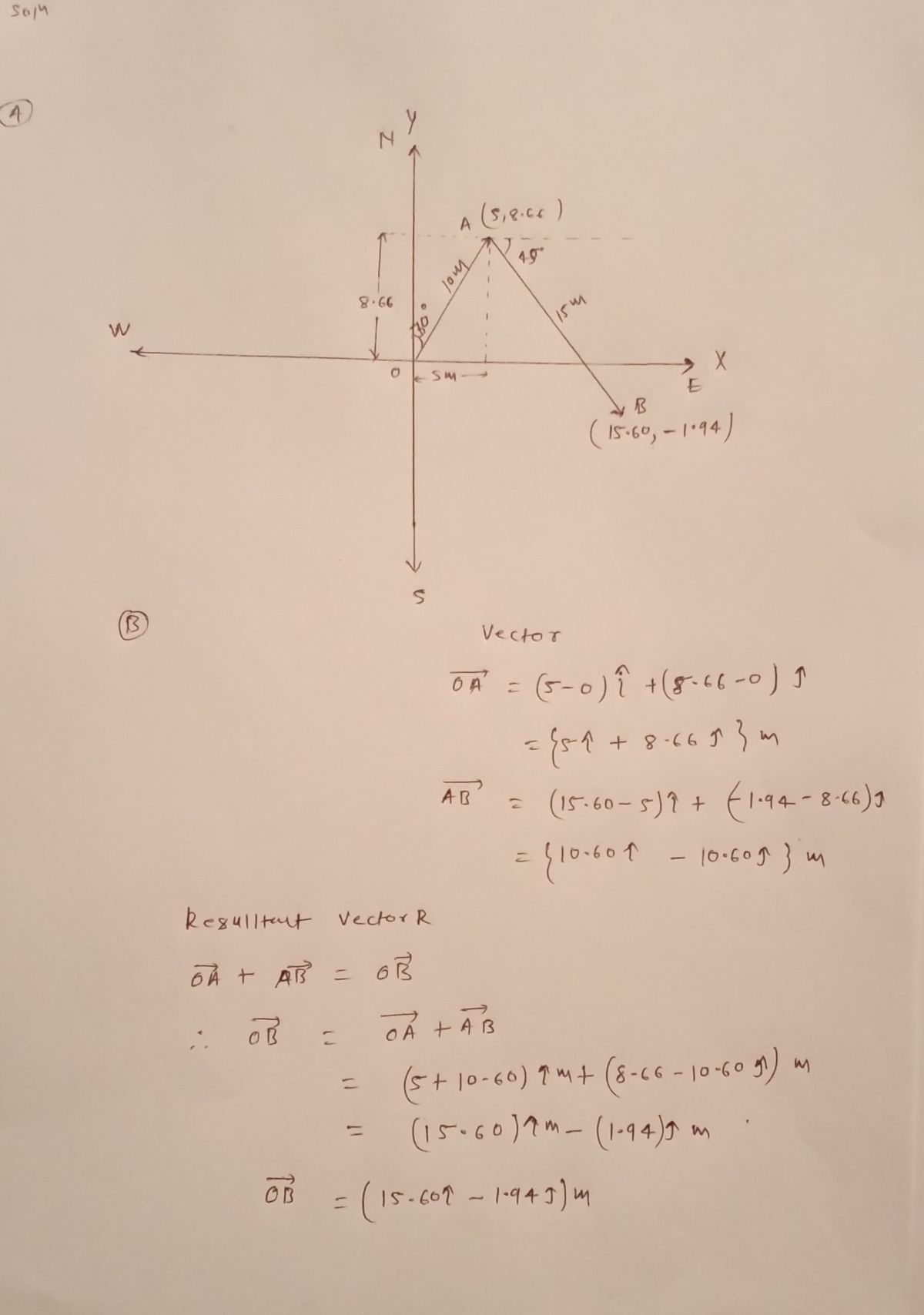You first walk 10 m at an angle of 30° east of north. Then you walk 15 m at an angle of 45° south of east. Assume that East is X and north is why and assume we start at the origin (0,0). A. Make a graph with X and Y axis and draw your path on that graph (to scale or at least as close as you can get). Start the first vector at the origin in the second vector at the top of the first vector. Then draw the resultant vector (their sum) B. Break each part of the walk into their ex and Y components and then some them to get the X and Y components of the resultant vector. Make sure to includ
You first walk 10 m at an angle of 30° east of north. Then you walk 15 m at an angle of 45° south of east. Assume that East is X and north is why and assume we start at the origin (0,0).
A. Make a graph with X and Y axis and draw your path on that graph (to scale or at least as close as you can get). Start the first vector at the origin in the second vector at the top of the first vector. Then draw the resultant vector (their sum)
B. Break each part of the walk into their ex and Y components and then some them to get the X and Y components of the resultant vector. Make sure to include units in unit vectors.
C. What is your displacement from where you originally started?
D. If the whole walk took 40 seconds then what was your average velocity?

Trending now
This is a popular solution!
Step by step
Solved in 2 steps with 2 images









